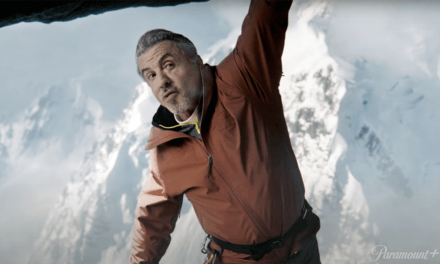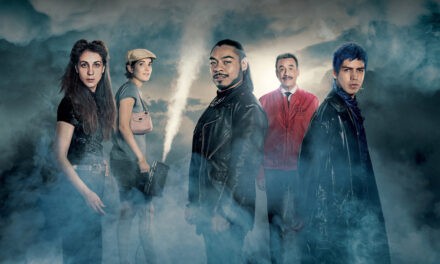Historically, media studies scholars have shied away from sports-related media texts due to a variety of perceived challenges: the sheer volume of texts (there’s always something on), their inaccessibility (the texts are ephemeral and controlled by corporate archives), the ambivalence of sports cultures (at once masculine and mainstream), and more. Additionally, other fields have long dominated sports scholarship, with communication studies and sociology shaping the academic discourse and asserting their own approaches. To mitigate these challenges, media studies scholars have applied alternative approaches to understanding sports media, such as critical-cultural analyses that account for sports media constructions of difference via gender, sex, and race—and athletes’ abilities to contest those differences. There have also been deft examinations of the media industries’ economic and ideological dependence on sports; historiographical accounts that mine a wealth of underexplored repositories and sources; and audience studies that foreground the reception and consumption of the sports genre.
While these studies placed sports media squarely in the foreground, others have used sports as a case study to illuminate broader trends in media studies. For example, scholars have recently revealed the key role sports broadcasts played in the innovation and diffusion of color television, while others have considered the pivotal role broadcasting, licensing, and franchising rights played in the conglomeration and consolidation of cable networks and providers. Others have addressed gaps in audience and fan studies by engaging with under-studied sports fan cultures.
Velvet Light Trap #87 seeks to deepen media studies understandings of sports. Given our current era of destabilization (of texts, genres, technologies, industries, distribution models, franchises, policies, etc.), sports undoubtedly remains a stimulus of—and, at times, barrier to—change in the media industries. As such, we invite a variety of media scholars—not just those who specialize in sports media—to reconsider and engage with sports in new and dynamic ways, asking, for example: How have production, distribution, exhibition, and reception of sports media changed over the last century and how are those changes reflected in the wider media ecology? What is the afterlife of sports media and how have those practices impacted scholarship, pedagogy, and future production practices? Where do radio and podcasting fit into the history of sports broadcasting? How are new media technologies (streaming platforms, video games, etc.) responding to, reacting against, or complementing linear sports channels and networks?
We welcome submissions that push the boundaries of current sports media literature and/or use sports media as key case studies, exploring any of the following themes:
- National broadcasting and industrial histories
- Early film histories and the continuing theatrical exhibition of sporting events
- Sports as a key media market sector
- Identification and identity politics (race, gender, sexuality, class, ability, nationality)
- Place and space [localism with franchises and coverage; (trans)nationalism with Olympics]
- Changing role of agents and agencies
- Franchising, ownership, and management
- Publicity, promotion, and marketing
- Activism and community engagement
- Ephemerality and textual analysis
- Distribution, exhibition, and transnational flow of sports media
- Archival perspectives, footage libraries, and audiovisual asset management
- Regulation (copyright, retransmission rights, horizontal integration)
- Labor, compensation, and ecological concerns
- Production techniques
- Genre analysis (non-fiction, narrative, & documentary)
- Pedagogical applications
- Video games (licensed games and eSports)
Submission Guidelines:
Submissions should be between 6,000 and 7,500 words, formatted in Chicago Style. Please submit an electronic copy of the paper, along with a separate one-page abstract, both saved as a Microsoft Word file. Remove any identifying information so that the submission is suitable for anonymous review. Quotations not in English should be accompanied by translations. Send electronic manuscripts and/or any questions to vltcfp@gmail.com by January 31.
About the Journal:
TVLT is a scholarly, peer-reviewed journal of film, television, and new media. The journal draws on a variety of theoretical and historiographical approaches from the humanities and social sciences and welcomes any effort that will help foster the ongoing processes of evaluation and negotiation in media history and criticism. While TVLT maintains its traditional commitment to the study of American film, it also expands its scope to television and other media, to adjacent institutions, and to other nations’ media. The journal encourages both approaches and objects of study that have been neglected or excluded in past scholarship.
Graduate students at the University of Wisconsin at Madison and the University of Texas at Austin coordinate issues in alternation, and each issue is devoted to a particular theme. TVLT’s Editorial Advisory Board includes such notable scholars as Hector Amaya, Ben Aslinger, Caetlin Benson-Allott, Aymar Jean Christian, Lisa Dombrowski, Raquel Gates, Dan Herbert, Dolores Inés Casillas, Deborah Jaramillo, Meenasarani Murugan, Safiya Noble, Debra Ramsay, Bob Rehak, Bonnie Ruberg, Neil Verma, and Avi Santo. TVLT’s graduate student editors are assisted by their local faculty advisors: Mary Beltrán, Ben Brewster, Jonathan Gray, Lea Jacobs, Derek Johnson, Shanti Kumar, Charles Ramírez Berg, Thomas Schatz, and Janet Staiger (emeritus).





